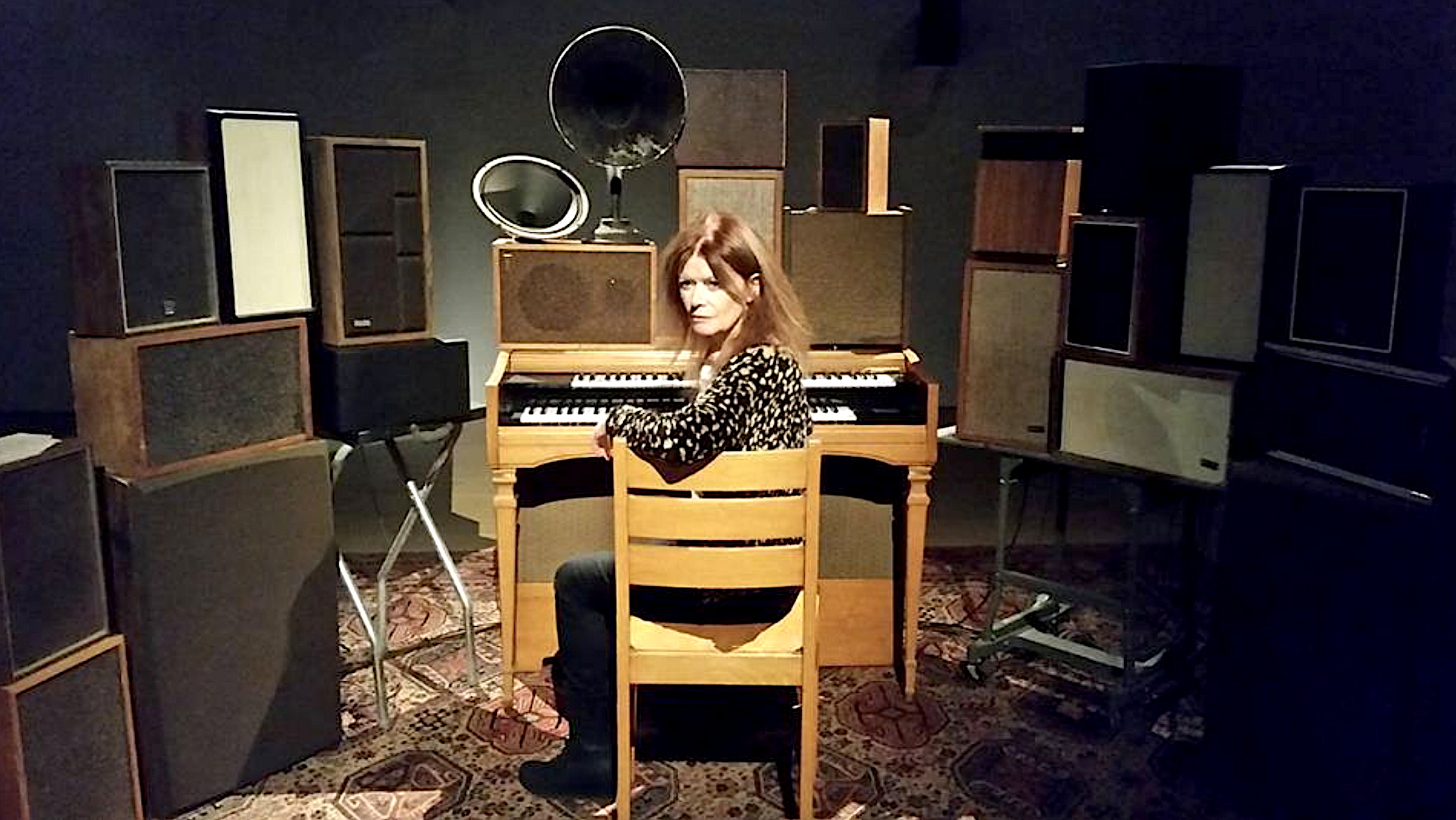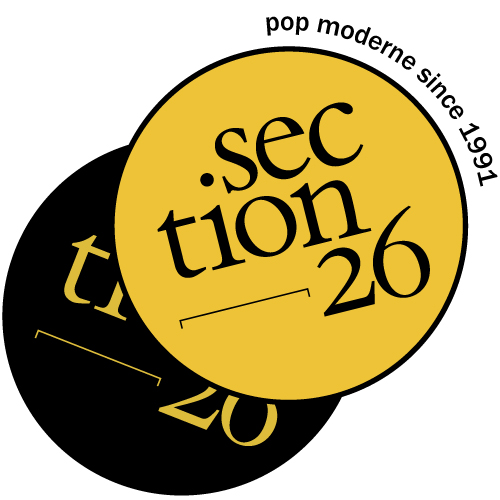
As she releases Blue on Blue, her superb second album which, as its predecessor, has been produced by Howe Gelb, Sylvie Simmons has indulged to do a mix between a blind test and a playlist for us. Which leads us to realize that chatting about music with someone who, like her, has interviewed almost everyone in rock music, is, for instance, starting to talk about Tom Waits to quickly sliding to what Johnny Cash used to have for breakfast.
Papa M, Over Jordan (Whatever Mortal, Drag City, 2001)
When I left London in 2004 to live in California for the second time in my life, I was travelling light. Just a suitcase. I put my record collection in storage and allowed myself to bring only 50 CDs, removed from their cases to make space. One of them was Whatever, Mortal. The second album David Pajo released under the alias Papa M is bare and beautiful, reminiscent at times of Bonnie Prince Billy or even early Leonard Cohen. Although I know the album backwards, whenever I play it, it always gives the feeling of being the first time. This is the opening track, an old, often-covered American folk standard, personalised with just a couple of lyric changes: Pajo’s Wayfaring stranger isn’t poor but a whore, and in his heaven there are no drugs.
Howe Gelb, A Thousand Kisses Deep (Gathered, Fire, 2019)
This comes with a whole tangle of memories and associations. It’s a song by Leonard Cohen, whose biography I wrote, and who was one of the two men seminal in my deciding to record my own songs. The other of those men was Howe Gelb, who lured me into the studio and produced and played on both my albums. And who covered this Cohen masterpiece on his recent album Gathered. He credits/blames my book for his newfound love of Cohen. Howe and I sang this song onstage at the Aarhus Festival in Denmark several years ago and it ended in a slow-dance on a crowded stage under the stage lights. Here he sings it with M.Ward, sounding much more beautiful than with me, but I bet their version didn’t end in a dance.
Sylvie Simmons, Keep Dancing (Blue on Blue, Compass, 2020)
To continue the dance – this song began life as the opening sentence of a short story I was writing, part of a collection as yet unfinished of one-minute stories. Mostly it’s unfinished because the stories kept wanting to stick around around for two or three minutes. So this story became a song – and actually it’s not really a story. The man dancing with no shoes on amid the broken glass and dogshit and cigarette ends was a real person that I loved.
Jason Molina, The Crossroads and Emptiness (Eight Gates, Secretly Canadian, 2020)
My life as a music journalist and my life as a singer-songwriter are more separate than some might think. They don’t chat that often, though they’re happy to share a drink. When one needs to use the room, the other one butts out. Earlier this year the music journalist me was given this posthumous album by the late frontman of Songs: Ohia to write an essay on. It seems that his records become more important as the years go by.
Neal Casal, Me and Queen Sylvia (Basement Dreams, Clitterhouse Records, 1998)
The day I’m writing these notes is the first anniversary of Neal Casal’s death. His passing hit me hard. I came to know him early in his career when I still lived in London and he would often come to the UK to play. Non-one was particularly interested in America. I could never figure out why, since he would release one great album after another. Leonard Cohen had also spent much of his musical career loved in Europe but largely ignored in the US, but then, in his seventies, he became a huge star. Sadly, Casal died at age 50. This beauty is from another of the 50 albums I brought to the US in my suitcase, Basement Dreams.
Sylvie Simmons, Carey’s Song (Blue on Blue, Compass, 2020)
This was a song that started out maybe ten years ago as an instrumental. It wasn’t planned that way, but words just didn’t come. At least not the right words. So I set it aside. Eventually, just before the last day in the studio, the bus finally turned up and all the words jumped out. We invited them in, Howe and I, and the two of us recorded it live in Wavelab studio, Tucson, in one take.
Tom Waits, Ol’ 55 (Closing Time, Asylum, 1973)
In Carey’s Song, the singer is in a car, in the early morning, driving away from home, which was a place where love had died. In Tom’s, the singer is in a car driving back home in the early morning, joy in his heart, from what sounds like a fine night of love. The first time I heard the song it was being covered by the Eagles On the Border album (1974). Both versions are great, but if I had to chose I’ll take Tom’s.
Johnny Cash, Hurt (American IV: The Man Comes Around, American, 2002)
I did a long interview with Tom Waits, up in wine country, California, where he lives, and for the first half hour or so he kept asking me questions about Johnny Cash. Someone had told him that not long before my interview with Tom I had spent a week with Cash, six weeks before he died, interviewing him for a hardback book that was part of the American Recordings’ box set Unearthed. Tom would ask things like, « What did he have for breakfast ? » ; and when I answered he would sway back and forth in his chair saying, « Oh man! Oh man! »; I love to see a brilliant artist being a fan of another brilliant artist. Covers have been a bit of a theme for this mixtape, so here’s Cash, near the end of his life,
covering Nine Inch Nails. Who could have known that a country music icon could make a highly personal song by Trent Reznor his own.
Sylvie Simmons, Sweet California (Blue on Blue, Compass, 2020)
This is a song about coming home and at the same time a song about moving on. I think that working with Leonard Cohen all that time taught me that it’s possible to have two opposing ideas in your head at the same time. It was one of the last songs I wrote for Blue on Blue – I’d had a bad accident and it had taken a year and many surgeries to be able to play my uke again – and it came to me all in one piece as I sat on a friend’s back porch in Northern California, gazing out at Mount Tamalpais, a place that David Crosby once made famous in song.
Joni Mitchell, California (Blue, Reprise, 1970)
When I titled my new album Blue On Blue, it wasn’t intended as a tribute to Joni Mitchell’s Blue. At least not consciously. But her whole bold, beautiful album is an essential part of my musical past and so deep in my me that maybe the unconscious part of me did. When I first performed with my guitar in a pub in my teens, my opening song was going to be a song from Blue. But I froze from stage fright and ended up writing about music instead. So many songs on this mixtape are interconnected. I just thought of another thing: several of the songs on Blue were at least partially about her love affair with Leonard Cohen.
The Beach Boys,’Til I Die (alternate mix) (Endless Harmony, Capitol, 1998)
There was a time, as a child, when I loved those early sun-and-fun Beach Boys singles. But as soon as I heard the albums, it was Brian Wilson’s reflective, lonely songs that I was drawn to, like Warmth of the Sun, Lonely Sea or In My Room. This song is so expressive. It’s profound and perfect. I’ve chosen the alternative mix on the Endless Harmony soundtrack album – an extended version whose long, dreamy vibraphone intro is truly beautiful.
Sylvie Simmons, Creation Day (Blue on Blue, Compass, 2020)
This was another song that came to me in one piece. I was sitting on the sofa with my ukulele and the melody and lyrics showed up at the same time. That has happened to me before, but this time I remember wondering at the words I was singing and where they could have from – words like “confession” and “creation”. In the first verse it just seemed like a song about love and loss. When we recorded it, I told Howe that it needed to have a long, dreamy instrumental after the second verse in which we would musically create the universe Howe raised one eyebrow. But that’s what we did, with Howe creating on an array of vintage synthesizers the sound of stars and planets being formed.


